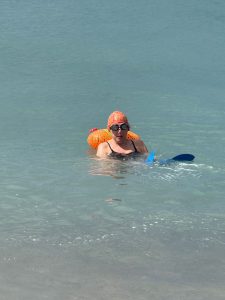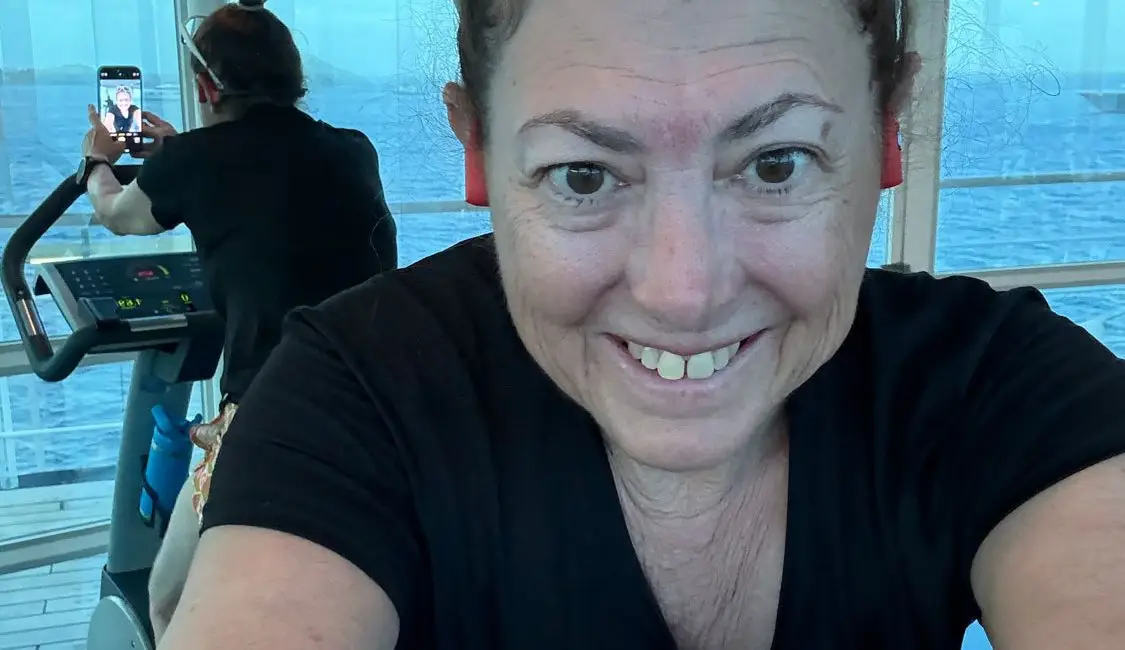Getting back into triathlon training after undergoing MISHA knee surgery has been difficult. I won’t sugarcoat it—there have been days when it felt like I was climbing an uphill battle, every step reminding me that I’m not where I used to be. Pain shows up when I overdo it—whether it’s walking too much, cycling too hard, or trying to push myself in the weight room. It’s humbling, frustrating, and, at times, downright discouraging. But I’m learning that the comeback from surgery isn’t meant to be rushed. It’s a process that requires patience, understanding, and persistence.
Even on vacation recently—yes, a cruise, no less—I tried to maintain some semblance of training. I ran twice, hopped on the bike twice, squeezed in three strength training sessions, and swam in open water several times. On paper, it looks like I crushed it, right? What you don’t see are the post-workout moments where I was reaching for something much stronger than an aspirin to dull the discomfort in my knee. Tylenol and Advil? They might as well be candy for me, offering little relief from the throbbing pain.
The truth is, I wanted to do more. I wanted to jump right back into the athlete I was before surgery. But my body had other plans—and listening to it has been more critical than hitting a target pace or squeezing in extra miles.

Struggling to Get Back from Knee Surgery is Slowing Down
Triathlon training is built on consistency and endurance, which feel impossible when recovering from an injury. What makes it harder is the mental battle that comes with slowing down. For me, it’s a constant push and pull. While I want to rebuild my fitness, I’m also keenly aware of the dangers of overtraining or ignoring my pain.
Then there’s that creeping guilt—the feeling that you’re falling behind, that your progress is too slow. But here’s a hard truth I’ve had to accept (and remind myself of daily): recovery is not linear. Some days, I feel strong and energized, while other days, it feels like simply walking is too much for my knee. It takes discipline—not to push harder—but to take things slow.
Tips for Easing Back into Training
Suppose you’re recovering from surgery or a significant injury like I am. In that case, I want to share strategies that have helped me rediscover my rhythm without beating myself up when progress feels slow.
-
Listen to Your Body (and Respect Its Limits)
Pain is your body’s way of saying “not yet.” There’s a difference between discomfort from effort and actual pain, especially in injury recovery. If your body is asking you to rest, listen to it. Adjusting your expectations doesn’t mean you’re lazy; it means you’re smart. -
Ease Into It
Start small. Set mini goals instead of trying to adhere to an old training plan. For me, running shorter distances—sometimes just 10-15 minutes—and feeling good about moving pain-free rather than hitting a fast pace. Over time, small, consistent efforts add up. -
Celebrate Tiny Wins
It’s easy to focus on where you wish you were, but don’t discount the progress you’ve made. A short run or pain-free bike ride is worth celebrating. Each of these small moments is a victory; together, they get you back in the game. To celebrate, you may want to buy yourself some cool adidas hoodies. That always makes me feel better, especially when they are nice and soft. -
Cross-Train Intelligently
Incorporate different activities that are less taxing on your recovering body. Swimming has been a saving grace for me—it’s a full-body workout that lets me maintain fitness without pounding on my knee. Use these low-impact workouts to stay active while giving your body a break. I’m also training for the Mackinac Island Swim, an 8.2-mile swim around Mackinac Island. So, the more time in the water, the better. -
Don’t Compare (Even to Yourself)
One of my biggest struggles has been resisting the temptation to compare myself to where I was pre-surgery. Instead, I focus on being better than I was yesterday. Progress might look different now, but it’s still progress. -
Get Professional Guidance
Don’t hesitate to team up with a physical therapist, coach, or medical professional. Having someone guide your recovery and training can help you avoid reinjury and build strength sustainably. -
Prioritize Recovery
Recovery isn’t just resting; it’s an active part of the process. Ice your knee, stretch, and sleep well. Even nutrition plays a big role—fueling your body correctly can speed up healing and give you the energy you need for training. -
Be Kind to Yourself
Guilt and frustration are usual, but don’t stay stuck in that headspace. Remind yourself that progress is progress, no matter how slow. You are showing up and doing your best, which matters.

Remember Why You Started
I try to remind myself of why I fell in love with triathlons in the first place. It’s not just the finish lines or the medals—it’s the joy of moving your body, the thrill of a challenge, and the sense of accomplishment that comes from overcoming the impossible. Right now, my pace might be slower, and my rides might be shorter, but I’m still trying. That counts for something.
If you’re also on the road to recovery, know this—you are not alone. We’re all together, one step (or one pedal stroke) at a time. Celebrate those small victories, prioritize your health, and trust that you’ll find your way back to doing what you love with time and effort. Keep going—you’ve got this.





